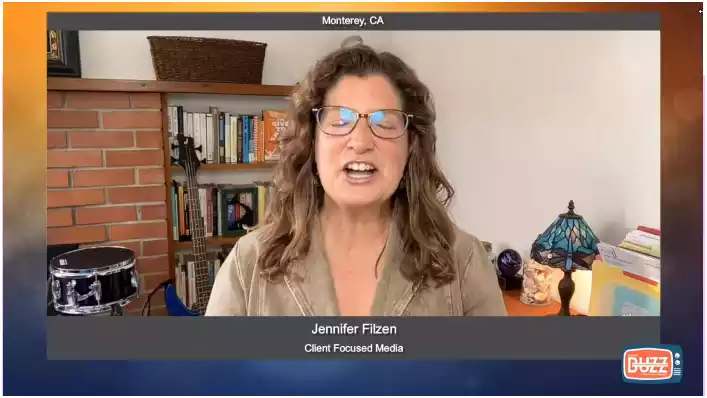Achieving Ideal Results in Prior Authorization: The Role of Clear Communication
Unlock the secrets to achieving ideal results in prior authorization. Discover effective strategies that streamline the process, enhance efficiency, and improve patient care. Dive into our expert insights for optimal healthcare outcomes.

Filling out the prime therapeutics prior authorization form is an essential step to ensure your medication is covered and you avoid unexpected costs. This form streamlines the approval process, connecting your healthcare provider with your insurance company to verify that your prescribed treatment meets the necessary criteria. By completing the Prime Therapeutics prior authorization form promptly, you can expedite access to your medication and stay on track with your health plan.
Let’s explore together!
Table of Contents
Achieving Ideal Results in Prior Authorization

This practice, which is meant to make sure that a patient’s insurance company approves of certain medications or treatments before they are performed, can frequently act as a bottleneck, delaying treatment and adding work for medical professionals. The role of clear communication must be balanced among the various strategies to streamline this process.
Understanding Prior Authorization
Prior authorization mandates that medical professionals get insurance company clearance before administering certain therapies to patients. This stage guarantees that specific drugs, treatments, and services are both covered by the patient’s existing insurance plan and medically necessary. The procedure is frequently criticized for needing to be more unified and transparent, even though its goals are to reduce healthcare costs and deliver adequate care.
The Communication Challenge
A basic problem that sits at the core of many previous permission concerns is communication. Delays, denials, and dissatisfaction can result from miscommunications among patients, insurance companies, and healthcare professionals. As a result, clear communication becomes essential for negotiating the prior permission environment.
Regarding Healthcare Professionals
Healthcare professionals must persuasively and clearly state why a procedure or drug is medically necessary. This calls for a thorough comprehension of the patient’s medical background and the factors that make the selected course of action the most suitable. Giving the insurance company thorough, accurate, and timely information can greatly increase the chances of approval.
Suggestions for Enhancement:
- To cut down on errors and expedite the process, use electronic submission techniques and standardized forms.
- To ensure knowledge and consistency in communications, create a specialized team or designate a distinct function within your practice to handle prior authorizations.
- Attend training sessions on a regular basis to stay current with insurance companies’ evolving policies and procedures.
For Insurance Companies
Insurance companies play a crucial role in the prior authorization process and must ensure their guidelines and requirements are transparent and easily accessible. Clear communication about what information is needed, the rationale behind denials, and how to appeal decisions is essential.
Tips for Improvement:
- Provide clear, concise documentation on prior authorization requirements on websites and in policy documents.
- Offer direct lines of communication for healthcare providers to discuss patient cases and clarify doubts.
- Implement user-friendly digital platforms that allow real-time updates and the tracking of prior authorization requests.
For Patients
Patients often find themselves caught in the middle of the prior authorization process, feeling confused and anxious about the status of their treatment. Clear, empathetic communication from healthcare providers and insurance companies can alleviate concerns and empower patients to participate actively in their care.
Suggestions for Enhancement:
- Inform patients of what to expect during the prior authorization procedure.
Inform patients of any updates or need for further information on the authorization request’s status. - Help patients advocate for themselves by directing them to options for patient advocacy or by calling their insurance company.
I'm very thankful for Portiva who I know is looking after my practice while I'm gone the virtual assistants can manage prescription refills, documents they can triage patients and just kind of answer administrative questions and they can handle a lot on their own. But also, they're very good about contacting me if there's any emergency or anything I need to attend to. So I'm very thankful for Portiva they can help almost any provider almost anywhere and it really allows for some good work-life balance as I'm getting to experience right now at my family farm so I'm very thankful for Portiva and I'm very happy to use their services"

Board Certified Family Medicine Physician

Portiva's Virtual Medical Assistant - I have all the support I need. There's somebody checking my email, any patient messages. Patients are still able to schedule and handle any scheduling issues and any kind of billing that needs to still go through. Portiva hands handles it all for me. I have support i have somebody that I can access 24/7 pretty much. It's all very seamless. If somebody has an emergency or needs a medication called in. I know that the va's at portiva will handle that for me.

Board Certified Family Medicine Physician

The Path Forward

Conclusion
Prior authorization presents a number of difficulties, but there are also many chances for improvement. Stakeholders in the healthcare ecosystem can turn prior permission from a barrier into a simplified process that supports high-quality, affordable patient care by emphasizing clear communication and utilizing technology. By doing this, we solve a significant operational issue and make progress toward a healthcare system that is more patient-centered. Therefore, in order to create a more effective pre authorization procedure that benefits both patients and clinicians, all stakeholders must continue to place a high priority on good communication. Together, let’s make this a reality.
To learn more about approval timeline that can enhance your medical practice. Discover more about Portiva and unlock a world of possibilities by visiting our homepage today!
- Tackling authorization denials head-on
- Ability of managing authorization denials
- Future of prior authorization
- Role of quality assurance in streamlining prior authorization processes
- Importance of efficient prior authorization support
- Reducing stress with real-time prior authorization
- How legal principles impact prior authorization processes
- Power of prior authorization analytics
- Prior authorization handbook for patients
- Healthcare prior authorization system
- Prior authorization changes
- Proactive risk management in prior authorization
- Educating and supporting patients in prior authorization
- Prior authorization requirements
- Understanding prior authorization insurance
- Prior authorization on patient care
- Decoding authorization denials
- Enhancing payer-provider communication in prior authorization
- Quality assurance optimizes prior authorization outcomes


